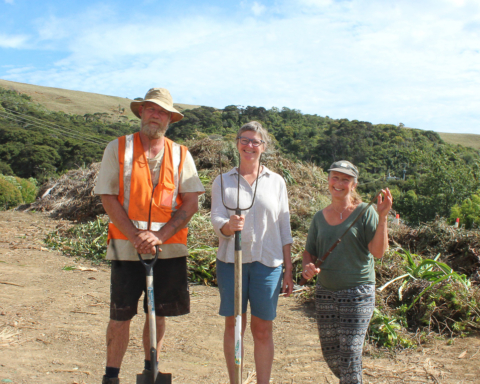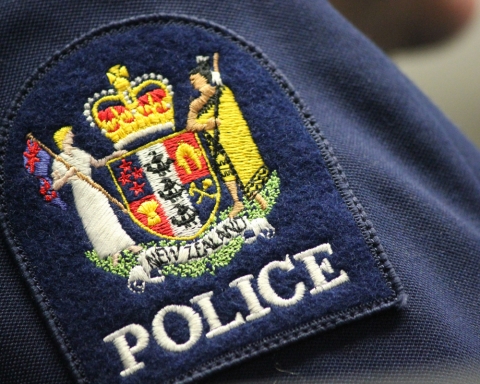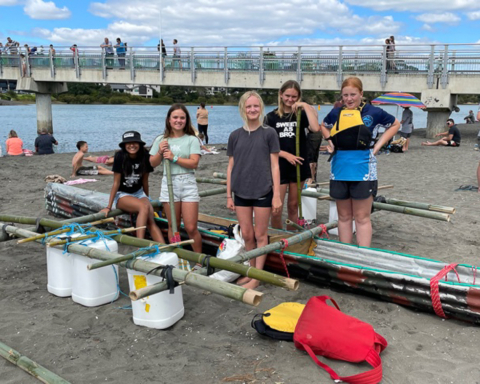Raglan residents are being encouraged to take back ownership of their town by reviving the community document, Raglan Naturally.
On Sunday, close to 100 people attended a public meeting at the supper room of the town hall, organised by the Raglan Community Board, to celebrate the successes of the 2001 document and to start the process of updating it.
The Raglan Naturally plan was created to give residents a collective voice regarding the development of their town, and was taken into account by the Waikato District Council in their decision-making.
There are 115 projects in the document: some are aspirational, some are ongoing, and some have been completed.
But over the years the momentum of Raglan Naturally has been lost, with the council seeking less and less input into decisions about the town from its community board or residents.
Community board member Lisa Thomson, who organised the meeting, said Raglan had to take ownership of Raglan Naturally again and bring it into 2016 and beyond.
“We are asking everyone to see where and how they can contribute to the future of Raglan,” she told those who attended the meeting.
“We want people to be involved. We are looking to form a steering group and want people to be Raglan Naturally champions.”
Wayne Morris, who was the chairman of the community board when the document was first created, told the meeting that a united front was needed if the plan was to be revived.
He said the views expressed in Raglan Naturally had to be taken into account by the council in its decision-making.
“If we want something and if we are going to review this plan and take it back to council then we need to take it as a united force or we will struggle. Council loves it if we disagree with each other.
“In my days the Raglan Community Board had a lot more clout and more control over what happened in town. Council listened to our input. Council doesn’t listen to us as much as they should, now.”
Mr Morris said the plan was created because the community wanted more of an input into how the town was to be developed.
“The old sleepy times of the past were over. Raglan needed change to survive, and it was important to be involved in that change and have it happen how we wanted it to.”
Waikato District councillor Clint Baddeley told the meeting that there were some big issues facing the town.
Mr Baddeley said Raglan had changed significantly over the years, and the people coming into town were more financially savvy.
“They have changed the dynamics of this town and what we see as Raglan.”
He said in his 12 years as a councillor, he always used the Raglan Naturally document as a guide.
“There has been an awful lot achieved,” he said, but it took a lot of hard work and everyone in the community had to take some responsibility for the document or it wouldn’t work.
“The community wanted a new museum … You wont believe how hard it was to get that museum.”
Steve Soanes, who was the council area manager at the time, said the development of the Raglan Naturally document was one of the highlights of his career.
“What it did was it pulled the whole community together and got everyone thinking about the issues. I haven’t seen that since.”
The aspirations of the community were sought through public meetings and questionaires in the Raglan Chronicle, and there was a lengthy consultation period to form the united front that was the 46-page Raglan Naturally.
Mr Soanes said thanks to the document, there were no high-rise buildings in Raglan, no McDonald’s and no KFC.
“That’s what the community said: We don’t want these things.
“I’d venture to say our aspirations haven’t changed that much … a place that hums but where we enjoy living.”
He said he would like to see the Raglan Naturally document be written into the district plan.
Tim Duff, who was on the original project team for Raglan Naturally, said the ball had been dropped but “we can pick it up again. It needs to come alive”.
“The gap between the community and the council is the widest it has ever been and the plan can narrow that gap by giving the council a better vision of what we want.”
He said there was nothing stopping Raglan from becoming self-sufficient in power, banning the use of glyphosate (Roundup) in the community, having bike paths everywhere and promoting eco-tourism.
“These are my ideas for Raglan. We need to get all the ideas down. Everyone has to have a say but we need to have a common vision.
“The community plan is about empowerment. How the community can get involved and drive the future of this town.”
Raglan Chamber of Commerce chairman Dave Currie said having a clear community plan would be helpful for businesses.
“The chamber’s role is to support and encourage businesses to thrive and be successful, and this can bring a lot of tension.”
Raglan resident Naomi Tuao said Raglan’s youth should be involved in reviving the community plan.
“They are our future – if we could somehow encourage our youth to be involved, because they are going to be the ones here in 20 years’ time. They need a voice.”
The successes of Raglan community-driven projects Xtreme Waste and Whaingaroa Harbour Care were also talked about at the meeting.
Inger Vos











